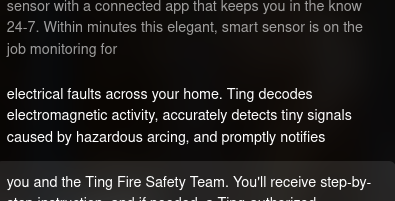Ian S
Thinks s/he gets paid by the post
Today, I received an email from State Farm, our insurer offering a free Ting device that monitors the electrical wiring in the home to give advance warning of potential electrical faults that could result in a fire. Here's a description of the device and what it can detect: https://www.tingfire.com/how-ting-works/ It sounds like a good idea and I just wonder if anyone else has checked it out. I have a close personal friend that lost their house due to a fire of undetermined origin so I know the devastation house fires can cause even if everyone gets out safely.





